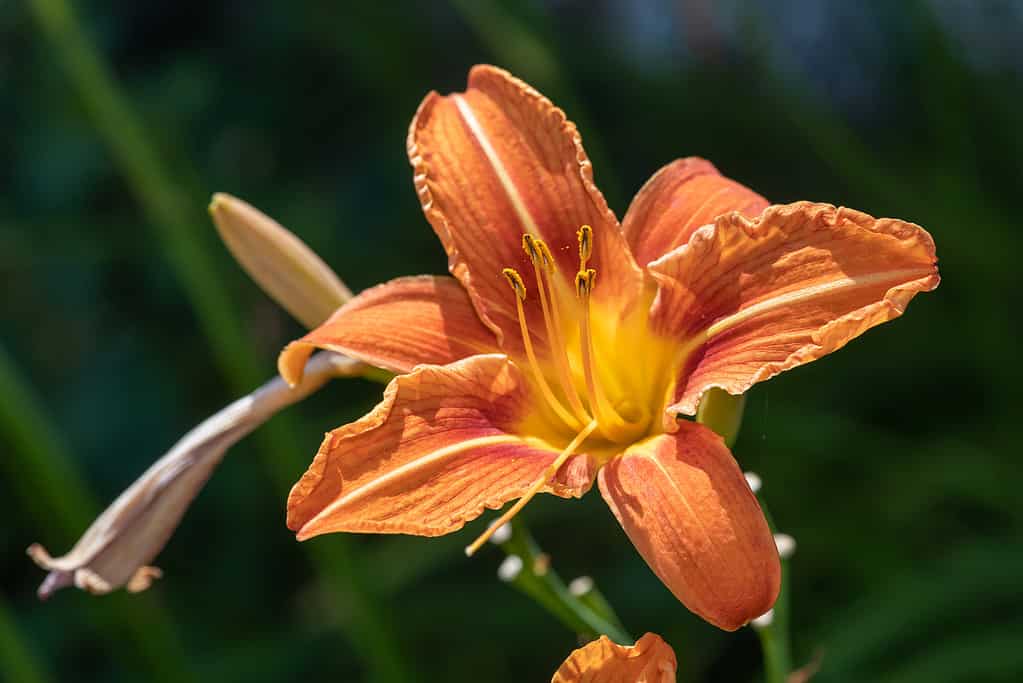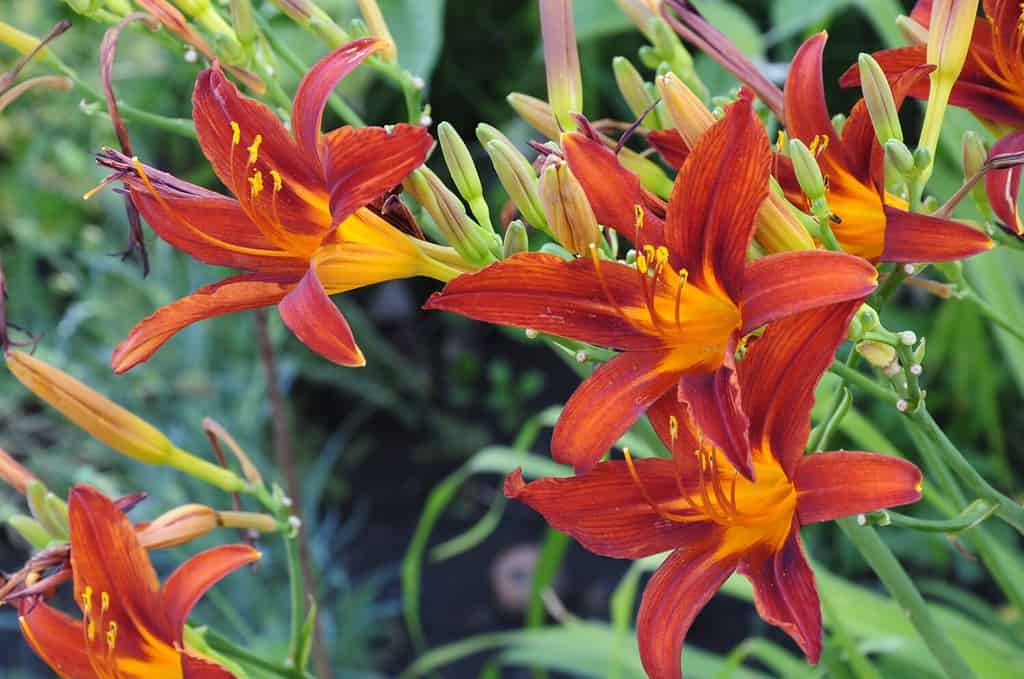Introduction: Exploring the Blooming Season of Daylilies and Its Beauty

Daylilies are a stunning addition to any garden.
©Tom Meaker/iStock via Getty Images
Known for their radiant colors, the daylily (Hemerocallis) is an iconic flower that you’ll want to see when they’re in full bloom. They can range from bright yellow petals to gold, from crimson to blackish-red, from rose pink to candy pink. They are easily one of the most beautiful flowers out there and are a staple in many different gardens. So when is the daylily peak season? The peak season for daylilies is during the summer. Read on to discover the optimal bloom times, what factors influence a daylily’s bloom time, and how to enjoy daylilies in your garden!
Peak Blooming Seasons: Discovering the Optimal Times for Daylilies to Bloom in Different Hardiness Zones
Daylilies are definitely a summertime flower–they are in a dormant period during the winter and do not bloom. However, they can still be taken care of during the winter to ensure a beautiful bloom come late spring and early summer. In order to do this, gardeners and plant experts have created hardiness zones. A hardiness zone as recognized by the USDA is the standard that gardeners and growers follow that help determine which flower will grow best in a given location. The zones are split up based on the average annual minimum winter temperature, and they are divided up by 5-degree Fahrenheit groups.

Tennessee has many different hardiness zones, and would be a great place to grow daylilies.
These zones range from Zone 1A (-60º to -55ºF) to Zone 13B (65º to 70ºF). These hardiness zones are the norm for all plants as well, not just daylilies.
Daylilies thrive in hardiness zones 4 through 9, but can also live comfortably between zones 2 and 11. Some of the states included in these zones are Tennessee, Missouri, Kansas, Utah, Oregon, and more. They can grow in many different states, but the hardiness zones of the midwest and southeastern states serve the daylily’s needs best. They are robust flowers, as they can manage to live in a variety of different climates and temperatures.
Across all the differnet hardiness zones, one thing remains consistent: the peak season for daylilies is the summer. This is when they are getting the most sun, and are exposed to hotter temperatures, which is how they thrive. The hardiness zone map is a great indicator to see where they can grow, but they are always going to do better during the hotter months.
Hardiness Zone Graph
| Zone | Temperature (in degrees Fahrenheit) |
| 1A | -60º to -55º |
| 1B | -55º to -50º |
| 2A | -50º to -45º |
| 2B | -45º to -40º |
| 3A | -40º to -35º |
| 3B | -35º to -30º |
| 4A | -30º to -25º |
| 4B | -25º to -20º |
| 5A | -20º to -15º |
| 5B | -15º to -10º |
| 6A | -10º to -5º |
| 6B | -5º to 0º |
| 7A | 0º to 5º |
| 7B | 5º to 10º |
| 8A | 10º to 15º |
| 8B | 15º to 20º |
| 9A | 20º to 25º |
| 9B | 25º to 30º |
| 10A | 30º to 35º |
| 10B | 35º to 40º |
| 11A | 40º to 45º |
| 11B | 45º to 50º |
| 12A | 50º to 55º |
| 12B | 55º to 60º |
| 13A | 60º to 65º |
| 13B | 65º to 70º |
Factors Influencing Bloom Time: Examining Environmental and Climatic Factors Affecting Daylilies Blooming

Daylilies are able to grow in a many different hardiness zones all over the United States.
©Fayka2008/Shutterstock.com
As mentioned previously, the peak season for daylilies is the summer. They thrive on full sun, which produces more flowers. Daylilies can live in partial shade, but this always causes them to produce fewer flowers. They’re an incredibly carefree flower and are resilient to most environmental factors.
Daylilies grow much more quickly when planted in the ground versus being planted in a pot. This allows them more room and space to grow. Some varieties of daylilies can grow to be 2 to 4 feet tall!
All of these facts are dependent upon its growing conditions. While they are resilient flowers, they do require certain kinds of standards to help them grow. These various environmental and climate factors can influence their bloom time and their overall growth.
To start, the rate at which daylilies grow and blossom is dependent upon the temperature they are grown. While they can grow in colder, more harsh temperatures, this will prolong their blossoming period. Daylilies that are grown in warmer, more tropical areas will blossom faster and produce more flowers. The hardiness zone in which a daylily grows is important because this will determine if it will thrive or not. In places like Florida, where it gets hot but not overly hot, daylilies thrive. In subarctic northern Alaska however, daylilies will not do so well, especially during the winter months.
Extending Bloom Time: Tips and Techniques to Prolong and Enjoy Daylily Blooms in Your Garden
While they are extremely tough flowers that can withstand even the driest conditions, daylilies do require some water. Make sure you water your daylilies plenty during the spring and summer. They can go without water for a short period, but this will negatively affect the amount of blossoms you’ll see.
Additionally, daylilies thrive on a variety of soils but it never hurts to aid them a bit with fertilizer. These perennials can be assisted by adding compost or peat moss, which provides them with more nutrients to grow into healthier, stronger flowers.
Finally, make sure that your daylilies are getting at least six hours of full sun. They can live in partially shaded areas just fine, but it will produce fewer flowers. They thrive on sunlight and will blossom more flowers if they are exposed to the sun in generous amounts.
To summarize, daylilies are incredibly hardy, resilient flowers that grow even in the toughest conditions. They can live in a variety of different hardiness zones and still have full blossom come summertime, their peak season. Even though they’re tough, don’t forget to water them!
The photo featured at the top of this post is © Oksana Akhtanina/Shutterstock.com
Thank you for reading! Have some feedback for us? Contact the AZ Animals editorial team.







